west coast offense
"Every football team eventually arrives at a lead play: a "Number 1" play, a "bread and butter" play. It is the play that the team knows it must make go, and the one its opponents know they must stop. Continued success with it, of course, makes your Number 1 play, because from that success stems your own team's confidence." –Vince Lombardi
As we discuss coaching candidates we'll invariably get into the same old discussions on what kind of base offense said candidate might want to run. There was some discussion on the board this week and I wanted to expand that discussion into some basic "Rock" plays of various offensive schemes.
It is incorrect to identify any one play (and even more incorrect to identify a specific formation or personnel group) as a complete offense. You always need counters to keep doing the thing you do, and the counters will often borrow directly from some other offensive concept's rock. All offenses will borrow from each other so no breakdown is going to describe more than 60% of any given offense. Most zone blocking offenses throw in man-blocked things (example: inverted veer) to screw with the defense. You can run most of these out of lots of different formations. You can package counters into almost all of them (example: The Borges's Manbubble added a bubble screen to inside manball).
Really what you're describing when you talk about any offense is the thing they do so well that they can do it for 5 or 6 YPP all day long unless defenses do something unsound to stop it (like play man-to-man, or blitz guys out of coverage, etc.). Some examples of offenses and their formation needs (where a need isn't specified, figure they can use any set or formation: spread, tight, 23, ace whatever). I've given the rock plays, and left out the counters and counters to the counters because that gets into way too many variants.
Finally, the terms "pro style" and "spread" are meaningless distinctions. NFL offenses have the luxury of getting super complex: they have passing game coordinators who teach the QBs and WRs Air Raid things then run zone or power blocked things. The spread refers to formations and personnel—it doesn't say anything about whether the QB runs, if it's an option offense, or what tempo it runs at, or even what kind of blocking it uses. What I've done here is break up the offenses into "QB as Run Threat" and "QB Doesn't Have to Run" since the construction of these base plays usually stems from that. Remember, however, that QB running offenses can (and often do) still use blocking right out of Vince Lombardi's favorite play.
QB as Run Threat Offenses:
Triple Option
The FB dive will hit too quickly for anyone but the DE to stop; once the DE bites, the RG moves down to the second level while the QB keeps and heads outside, with the RB in a pitch relationship to defeat the unblocked defender there.
Concept: QB makes a hand-off read then a pitch read.
Makes life especially hard on: Edge defenders who have to string out plays against multiple blockers and maintain discipline.
Formation needs: Two backs.
Helpful skills: QB who can consistently make multiple reads and won't fumble, highly experienced, agile OL, backs who can both run and bock.
Mortal enemy: The Steel Curtain. Stopping the triple option is a team effort; if everybody is capable of defeating blocks, challenging ball-carriers, and swarming to the pitch man there's nowhere to attack.
Examples: Air Force, Nevada, Georgia Tech, Bo's Michigan
[Hit the jump for ZR, QB power, Air Raid, West Coast, Manball, Inside Zone, and the Power Sweep].
I'm trying out a new feature of mouse-over tags so readers who don't get some of our references can get caught up. Underlined text has a tag. If the tag is a link then you've found a link. I appreciate any feedback on its deployment.
Left: Young Wolverines some of whom were recruited for power (Upchurch). Right: Power.
Chris Brown's recent article on Smart Football included a link to a 1997-vintage article by Bill Walsh (YTBW). Chris included it as a way of crediting Walsh for correctly predicting Tony Gonzalez would become a great NFL tight end. With Michigan transitioning further toward a Walsh-ian offense, I thought I'd appropriate the whole article to see how well Michigan's 2013 offensive roster matches Walsh-ian archetypes.
Before we jump in, you'll recognize a lot of what's said here from like every NFL draft report ever. Walsh's coaching tree perforated the league for years, and that meant the things he tended to look for in players became what most of the people making draft decisions were looking for. They've been repeated so often as to become memes, however I still think going back to the source can provide some insight into how Michigan's players and recruits are being evaluated.
This is all intended to help you do your own scouting when we publish things like Hello posts (lots of those coming up) and positional previews.
Quarterback
Tom Brady prototype, Tom Brady, Tom Brady with legs? --Bryan Fuller
Walsh Says: 6'3, 210. Having a strong arm isn't as important as an "inventory" of passes, although decent arm strength is a necessity:
"Arm strength is somewhat misleading. Some players can throw 80 yards, but they aren't good passers. Good passing has to do with accuracy, timing, and throwing a ball with touch so it is catchable…
"Remember, the goal of passing a ball is to make sure it is caught ... by your intended receiver."
The most important characteristic for a quarterback is intuition/instincts. He has to be able to sense the rush, make the right decision quickly and get the ball "up and gone," and handle progressions and broken plays with grace as opposed to a sense of urgency.
"The single trait that separates great quarterbacks from good quarterbacks is the ability to make the great, spontaneous decision, especially at a crucial time."
Walsh wants his quarterback to be "courageous and intensely competitive." He also wants them mobile and defines it thus:
Mobility and an ability to avoid a pass rush are crucial. Some quarterbacks use this mobility within the pocket just enough so they are able to move and pass when they "feel" a rush. But overall quickness and agility can make a remarkable difference. As an example, there were some very quick boxers in Sugar Ray Leonard's era, but he was quicker than they were and because of that he became a great champ.
Walsh's Favorite Wolverine: Tom Brady, obviously. Tate Forcier.
What to look for in a Scouting Report: High accuracy plus high YPA. "Makes things happen."
What you can learn on film: Doesn't make you nervous. Escapes from pressure then seems calm, not rushed. Sees something and reacts quickly. Receivers aren't making tough catches or breaking stride.
What could signal bust potential: First a warning on this part not to take it as "anyone who exhibits this trait will bust." What I'm saying is beware a guy ranked highly because this feature he possesses, which is a good thing to possess, may be overrated. Here it's arm strength—more an NFL problem than college since college QBs can learn systems and Navarre their way to great college careers with only one type of pass. Arm strength with no accuracy and a terrible delivery can turn into a great player if he's got an innate sense (think Stafford), but more often a coach will try to fix it and end up with a Dontrelle Willis.
How our guys compare: So far only Devin Gardner has seen substantial play against college defenses but we've gotten about a game's worth of Russell Bellomy too. Gardner's inventory has passes for finding Gallon 40 yards downfield, zips that only Dileo can get to, and even that Stafford-y thing he flipped to Dileo in the Outback Bowl. He has ideal size, and wins the mobility category over everybody not named Denard Robinson. If you give him a lane to pick up yards with his legs he will take it. And he MAKES PLAYS, those coming first to mind being where he runs around in the backfield defying sack attempts until something worthy of forward progress appears.
His weakness so far has been in that crucial "up and gone" aspect. His delivery has a long wind-up and that exacerbates a medium-to-mediocre diagnosis-reaction speed. Previous spring games when Devin looked really bad at this suggest it wasn't a few months as a receiver to blame, although that obviously didn't help. Gardner will live and die by his scrambling and ability to make linebackers freeze in coverage when he takes a step forward. He's not Tom Brady, but Gardner's package can equal a helluvah good college QB. An offseason as quarterback in a system designed to his strengths puts the ceiling high for 2013, and off the charts if there ends up being a 2014.
Russell Bellomy (right-Upchurch) in his few appearances last year—mostly the 2nd half 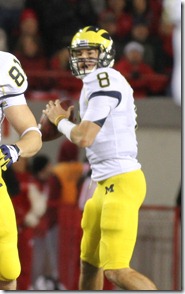 against Nebraska—gave us a fairly strong indication of his abilities. He wins Walsh points by having a catchable ball, but there it ends. His apparent lack of arm strength severely limits the inventory, his agility isn't anything special vs. Big Ten defenders, and while you can forgive a freshman thrust into starting for this, he showed a lot of panic. I am skeptical that he can contribute on this level unless his arm strength improves as much as I expect his comfort will.
against Nebraska—gave us a fairly strong indication of his abilities. He wins Walsh points by having a catchable ball, but there it ends. His apparent lack of arm strength severely limits the inventory, his agility isn't anything special vs. Big Ten defenders, and while you can forgive a freshman thrust into starting for this, he showed a lot of panic. I am skeptical that he can contribute on this level unless his arm strength improves as much as I expect his comfort will.
Shane Morris, now. Other than every scouting thing they can do with high schoolers, it's hard to say what he will turn out to be. The senior year performance and the thing that guy said in the Elite 11 about his primary read being taken away are marks against the Walsh archetype, but the size and arm and full inventory are there. He's too young to know if he will develop the rest.
Running Back
Terrance Flagler, A-Train, Toussaint –Upchurch
Walsh Says: Needs to be big enough to take punishment and always fall forward, but "some smaller runners play big." He uses James Brooks but of course we've got our own exempli gratia. The 1B for backs is again, instincts, though he emphasizes getting "the first four yards within the scheme and then rely on instincts to take it beyond that."
Walsh puts a high value on durability, which maybe isn't as important in college where the hits are lighter and the roster is deeper. The other thing he harps on is instinct, mentioning he got burned on this with Terrance Flagler. This is the difference between Michael Shaw and Mike Hart.
After that he goes into bonus features. If he can block he doesn't have to come off the field in passing situations. He has to be able to catch a screen and the further down the field he can threaten as a receiver the more "dimensional" the offense becomes.
Walsh's Favorite Wolverine: Anthony Thomas. Always falling forward, instinctual enough to be a kick returner before becoming the feature back.
What to look for in a Scouting Report: At least 185 lbs., thick and squat. Numbers don't tank against high-level competition.
What you can learn on film: Defenders look like bad tacklers (subtle movements by the RB make him tough to set up on). Falling forward, durability, operating in small spaces. Lots of D-I ticketed RBs will run sweeps all the time because their speed is just unfair against high school DEs. Watch the inside and zone running.
What could signal bust potential: Beware the big backs who wrack up huge high school yardage by running through terrible tacklers. It's hard to tell the guys who can subtly shift their bodies to make themselves difficult to bring down from the ones who just truck over a division full of future doctors and lawyers. One strong attribute can sometimes dominate a bad high school league, but D-I football requires several working together.
How our guys compare: Toussaint has shown the instincts and "plays big" at near the extreme for smallness. He looked on his way toward being a zone-style feature complement until having the unluckiest year in recent Michigan RB history. Justice Hayes is like Toussaint except he's yet to show those instincts. Dennis Norfleet has the playmaker thing down but there's a major difference in size between him and the other guys. Norfleet was listed at 5'7/161 last year, and Vincent Smith was put at 5'6/175. Hayes was 5'10/183 and Toussaint 5'10/202. Norfleet/Smith and Toussaint/Hayes are different tiers.
Among the plowshares, thick-trunked Thomas Rawls saw extensive action last year. The difference between him and Mark Ingram is Rawls seems to miss his hole a lot—that "first four yards" thing is a problem. I haven't seen enough of Drake Johnson yet to know if he brings anything different. None of the above (who are still on the roster) have yet to demonstrate they're any better than mediocre blockers.
Two incoming running backs come with the Walsh stamp of approval. Green is already 220 lbs. and his senior highlight reel shows him doing a lot of inside power running and finding his extra yards. Deveon Smith is already Toussaint-sized and seems to have that micro-instinctual quality that Hart had. No idea if either of these guys can block.
[The rest of the offense after you JUMP]
This is a follow up to to Doctor Rocklove a few weeks ago, where I identified the influence of offensive sets on philosophies. If you're not familiar with offensive theory you should go back and read that. If you're a football coach you are welcome to pinch the bridge of your nose and shake your head, for this is only going to cover about 20 percent of what you know to be the basics of offensive football.
The point today is to look at some of the base plays of various offenses, and a few of the constraint plays that they use to counter, and what defenses do to counter that. In doing so I hope to find stumble upon a better explanation of Borgesian offensive theory than the "grab bag" this space has previously suggested.
That Thing You Do
You've probably read enough college football boilerplate by now to have heard a coach talk about "what we'd like to do." This does not have to mean one play, but it often means one concept—very much like a play—which the team will be able to execute to perfection against the defense they want to see. That play is usually going to be low-risk, and if executed flawlessly against the vanilla defense it's built to beat, it will gain a consistent 5 to 7 yards.  It can be run out of many formations, and you will practice it a thousand million times until you are sure it will work every time unless the opposition "cheats" to beat it.
It can be run out of many formations, and you will practice it a thousand million times until you are sure it will work every time unless the opposition "cheats" to beat it.
For Vince Lombardi it was the sweep. For Wisconsin (and virtually every high school in our division in the late-'90s) it was the ISO. It could be the Triple-Option (Bo), or the Zone Read (Rodriguez), or Hitch-n-Out (Walsh) or Levels (Peyton Manning's favorite), or 62 mesh (Captain Leachbeard). With passing offenses, which is Borges's thing, it's important to note that the core concept itself can often be a package of plays which work off of each other, none particularly favored; for running the same concept will vary where on the line it will attack.
You can go crazy for your core concept. You can practice it incessantly. You can recruit players whose skills best fit what they're supposed to do on that play. You can even focus physical training on developing muscles that are used on that play. The better you are at that play—and this is a sliding scale—the more the defense has to move someone or do something to "adjust" to you. But this is a zero-sum game, so if you're moving a defender to stop the base play, he's no longer doing the thing he was doing before. He is making something else way easier than it should be. He'll do this anyway, until you make him pay.
Constraint Theory of Offense and RPS
What you choose as your core play or concept will determine much about the other things your offense does, because now you add plays to punish defenses for adjusting to your base play. That's what coaches mean by "constraint"—you are constraining the level to which the defense can react to your bread and butter. What you are essentially doing is creating an environment in which you get to run your core play, which you've practiced more than any other play, exactly how you drew it up as much as you can.
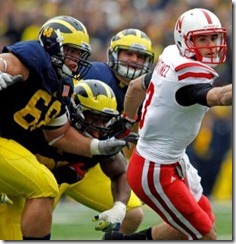 Certain concepts are almost always constraints because they won't work against vanilla defenses. Delayed handoffs work because the defensive line is closing on the quarterback as if it's a pass play. Halfback screens work well against blitzes but if a linebacker is in man on the running back, a vanilla defensive concept, you're screwed.
Certain concepts are almost always constraints because they won't work against vanilla defenses. Delayed handoffs work because the defensive line is closing on the quarterback as if it's a pass play. Halfback screens work well against blitzes but if a linebacker is in man on the running back, a vanilla defensive concept, you're screwed.
Defensive wins in rock, paper, scissors are rare and lucky guesses; usually a D's successes come from outstanding execution of a vanilla defense, for example if the nose tackle shoots past a playside block and forces a pitch on a speed option (as if that could happen).
Defenses have constraints too but theirs are limited by the offense's greatest advantage: whoever has the ball chooses the play (the D's advantage is so much more can go wrong with offensive execution). Defensive constraints translated to boilerplate sound like "we took away the run and made Denard beat us through the air." What they mean is the defense was cheating against the offense's base play all game but leaving themselves more open to the constraint plays, betting on poorer execution by the offense.
Dantonio last year sent two blitzing linebackers up the middle on many occasions, taking away Michigan's bread 'n butter play "Denard-'n-stuff." This forced Michigan into our constraint, which was targeting open receivers in short zones, but then Dantonio took this away by having safeties replace the blitzing LBs. This opened up another constraint by making deep coverage completely up to the cornerbacks, but then a trash tornado covered that constraint for them.
What the constraint theory does for playcalling is create a kind of matrix of offensive adjustments to defensive adjustments and adjustments to those adjustments. For a typical varsity high school team that matrix is probably 20 plays, and for college football it's more complex, and in the NFL the adjustments are so myriad and subtle I'd have an easier time teaching EMI/RMI shielding (it sounds hard).
Because the shades of gray in such a big decision matrix make for convoluted understanding, I've tried to (over-)condense the basic constraints of four basic offenses. There is way, way more but these are a few of the constraint packages that Michigan used last year.
Manball
Offensive Concept: I'm bigger, faster and stronger than you are, so I'm gonna hit you so hard your momma cries, then evoke masculine metaphors.
Defensive Concept: Control the point of contact, win 1st down, never let the train leave the station.
| Offense | Defense | |
|---|---|---|
| Rock | Man-on-man blocking, backs hit 2nd level at full speed running vertically. Repeated success quickly tires defenders, especially if the backs are regularly hitting defensive backs, and sets up soul-crushing play-action. | Read and react. Have LBs who can react quickly to the right hole (5-2, 4-3 under, 3-4), or b) have superior DL beat their blocks while the LBs maintain their gaps (4-3). Zone behind that so CBs can pincer. |
| Paper | Prey on the reacting linebackers by running play action, then rolling the pocket away from the point of attack and passing deep. | Blitz their favorite gaps. The point is to control where the point of contact occurs, so the sooner that happens, the sooner one of them will take out the lead blocker, and the sooner the ballcarrier is tackled. |
| Scissors | Screens, draws, and quick, short passes to curl and out routes to take advantage of corners' fears of something deep. | Back off into safe coverage--these days it's cover 2 man, meaning the cornerbacks are in man on WRs with safety help over the top. This takes the CBs out of run support but any pass deep is into double-coverage. |
Timed Passing (West Coast)
Offensive Concept: A symphony of route design and timing that puts defenses into a progression of impossible choices.
Defensive Concept: Throw off your timing, suffocate your routes, kill your conductor.
| Offense | Defense | |
|---|---|---|
| Rock | Quick routes by receivers and RBs that make a zone defender commit to one guy, then hit the other guy before another defender can come up. | Cover-2, and faster, smarter zone defenders who pass off receivers seamlessly, so that the O has to check down to nothing, throw into a super-tight window, or just runs out of time before the pass rush gets home. |
| Paper | Run the ball with power, delayed handoffs and screens. Once the defense is thoughtlessly stepping backwards when the QB is, they're no longer able to react to something as basic as a RB and his convoy pointed downhill. | Zone blitz, i.e. drop DL into coverage while random LBs and safeties blitz or squat in short zones. Reads and blocking are much more difficult, and small windows become no windows. |
| Scissors | Throw "hot" into the pressure, with pre-arranged hot (post-snap) reads that both the QB and his receivers make. | Levels/Robber. Drop back in a 3-deep zone while rushing 5 (often the SLB/nickel). Robber reacts to runs/screens or replaces guy who blitzed for instant pick/scared QB. |
Read Passing (Air Raid, Pro)
Offensive Concept: Spread, mesh, read, and gun, so on any given play, at any spot on the field, we can put it where you ain't.
Defensive Concept: Anywhere you can get, I can get faster
| Offense | Defense | |
|---|---|---|
| Rock | Spread to pass. The O-line is spread to basically neutralize line play (DL will break through eventually but seldom right away). Receivers run "mesh" routes against each other, then cut off their routes when they've recognized the D in order to find soft spots in the zone. | Cover-3 zone, trusting your LBs to intelligently route receivers and react and trusting the QB and WRs can't connect on all of their 7-yard passes and that soft spots are small. |
| Dynamite with a cut-able wick | Curls, and/or bubble screen whenever the defense is obviously backing off. Dana Holgorsen has altered this to delayed handoffs and screens by using two RBs and putting one in motion to simulate the spread. | 3-5-3. The Air Raid threatens the whole field to open up the easy passes off of two crossing routes, so forget pass rushing and clog up the middle. |
| Scissors | (This is just mean) Four Verts: suddenly the deep receiver is no longer just a quick glance to keep you honest but a high-low with the seam. | Press man coverage/blitz up the middle. |
Option (Triple-Option, Zone Read)
Offensive Concept: Reverse the traditional 7-on-6 "numbers" advantage of the defense in the running game (i.e. their front 7 versus 5 OL and a running back) by having the quarterback participate, and "blocking" an edge defender by optioning off of him instead of wasting a body.
Defensive Concept: The cat has more patience than the mouse.
| Offense | Defense | |
|---|---|---|
| Rock | Isolate an unblocked front-7 defender against the QB and another accessible option he can go to once the defender commits. | Change up the edge attack so the QB is reading the wrong guy or walking into a trap. Scrape exchange, slant the DL, etc. |
| Paper | Fake the option and then send a quick seam over the heads of the oncoming defenders. | Cheat extra defenders (8 or 9 in the box) into the area where the option will occur so nobody gets isolated and/or blitz into one of the options (e.g. CB blitz or MLB blitz into RB's hole) so unblocked guy can focus on one option. |
| Scissors | Option 3. This is the FB dive in a triple-option and the bubble screen in the spread 'n shred, and is a constraint called by alignment. | Line up "clean" with safeties still in coverage, and if they option do what you can to delay the decision and await the cavalry. |
Next time in this series: vanilla defenses, and the best offense for Michigan this year and beyond.
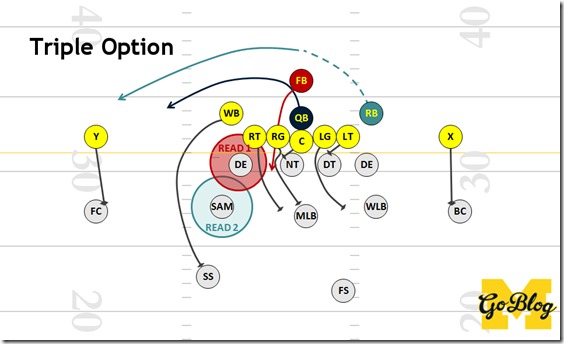


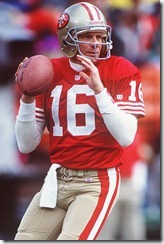

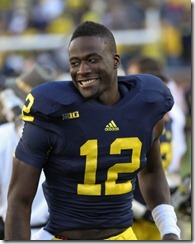
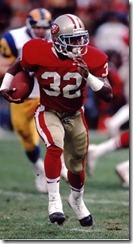
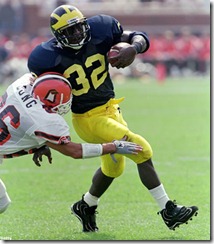
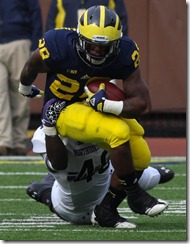


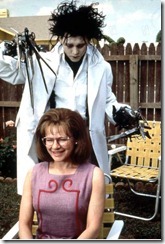
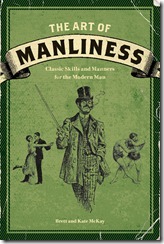

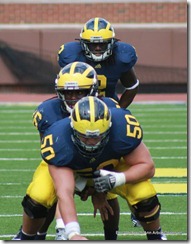
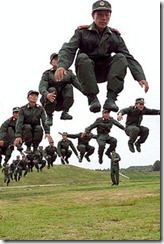
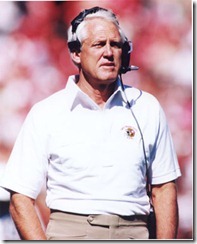
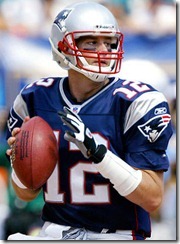
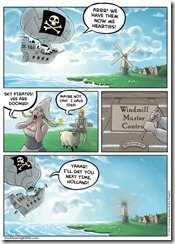
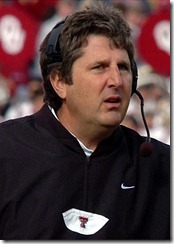
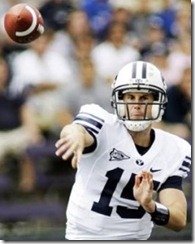

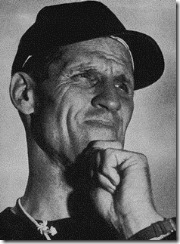
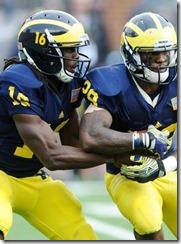
23